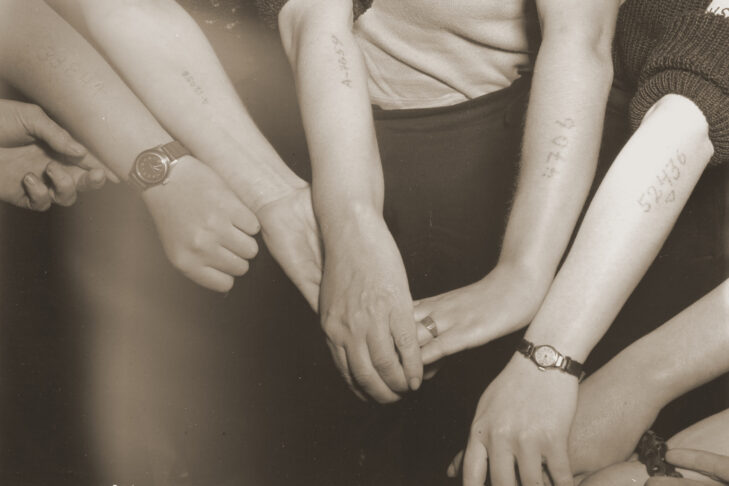I was 9 years old when I got my first inkling of the Holocaust. My mother told me about Mrs. Summers, whose daughter was a friend of my sister. An officer had tattooed a number on her arm when she was incarcerated in a Nazi camp. I don’t think I quite got it: a person branded with a number, like a horse or a steer in one of our cowboy movies? It didn’t make sense, and it was scary.
Mrs. Summers visited local schools, showing students her tattoo and talking about what had happened to her family. Germany sent her money as retribution, and she used it, my mother explained, to have a gold charm designed with her camp number. It was her way of showing them what she thought of their “blood money”: Never forgive, never forget.
Looking back, I think Mrs. Summers’ story held plenty of information. For a girl my age, the whole truth was unimaginable.

A few years later, my mother took me to see “Judgment at Nuremburg” with Spencer Tracy. It contains graphic images of the Nazi horror and moving performances depicting the kind of nightmares that haunted many families. Around the same time, I saw “The Diary of Anne Frank,” and I discovered that girls and boys my age were victims, too. Some scenes from those films have stayed with me.
Today, there is new urgency to teaching about the Holocaust. Only 400,000 Jews who survived or fled the Nazi regime are still alive, according to the Claims Conference, an organization that sends compensation to survivors.
At the date of this writing, 17 states require schools to teach secondary students about the Holocaust. Parents and Sunday schools have many options for laying the groundwork to teach young people about this singular event. The material is so shocking students need time to absorb the information.
As a starting point, teachers or parents could order a picture of a survivor displaying a tattoo from the Holocaust Museum in Washington, D.C.
Movies and books like “Number the Stars,” “The Island on Bird Street” and “The Book Thief” are a good introduction for middle school students and older.
The Holocaust Museum also has short clips on a variety of topics, such as survivor messages.
Parents and teachers can also find videos on YouTube, such as
“The Holocaust: Questions and Answers” for introducing the history of the Holocaust or for previewing a book on the subject.
A straight-forward text with witness testimony and photographs in books like the one I wrote, “The Holocaust: Never Forget,” and it’s companion study guide, are options for junior high school students and older.
Learning about the Holocaust should be a process that only slowly reveals the unimaginable truth.
This post has been contributed by a third party. The opinions, facts and any media content are presented solely by the author, and JewishBoston assumes no responsibility for them. Want to add your voice to the conversation? Publish your own post here. MORE



